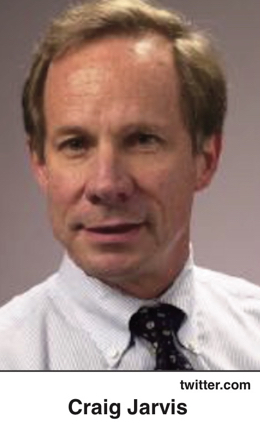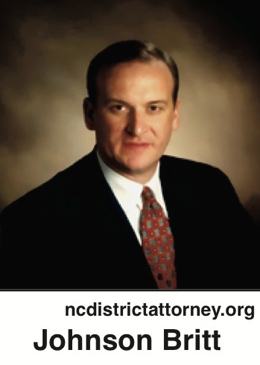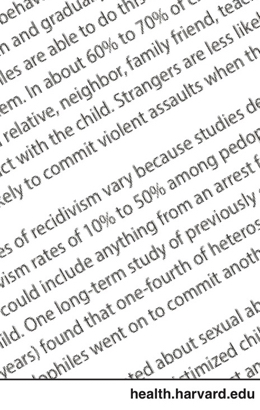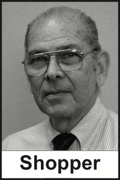Rascals case in brief
In the beginning, in 1989, more than 90 children at the Little Rascals Day Care Center in Edenton, North Carolina, accused a total of 20 adults with 429 instances of sexual abuse over a three-year period. It may have all begun with one parent’s complaint about punishment given her child.
Among the alleged perpetrators: the sheriff and mayor. But prosecutors would charge only Robin Byrum, Darlene Harris, Elizabeth “Betsy” Kelly, Robert “Bob” Kelly, Willard Scott Privott, Shelley Stone and Dawn Wilson – the Edenton 7.
Along with sodomy and beatings, allegations included a baby killed with a handgun, a child being hung upside down from a tree and being set on fire and countless other fantastic incidents involving spaceships, hot air balloons, pirate ships and trained sharks.
By the time prosecutors dropped the last charges in 1997, Little Rascals had become North Carolina’s longest and most costly criminal trial. Prosecutors kept defendants jailed in hopes at least one would turn against their supposed co-conspirators. Remarkably, none did. Another shameful record: Five defendants had to wait longer to face their accusers in court than anyone else in North Carolina history.
Between 1991 and 1997, Ofra Bikel produced three extraordinary episodes on the Little Rascals case for the PBS series “Frontline.” Although “Innocence Lost” did not deter prosecutors, it exposed their tactics and fostered nationwide skepticism and dismay.
With each passing year, the absurdity of the Little Rascals charges has become more obvious. But no admission of error has ever come from prosecutors, police, interviewers or parents. This site is devoted to the issues raised by this case.
On Facebook
Click for earlier Facebook posts archived on this site
Click to go to
Today’s random selection from the Little Rascals Day Care archives….
Click for earlier Facebook posts archived on this site
Click to go to
Today’s random selection from the Little Rascals Day Care archives….
Lacrosse case wasn’t state’s only imaginary crime
 Oct. 14, 2015
Oct. 14, 2015
“(Attorney General Roy Cooper) took over a tangled and controversial investigation of alleged gang rape by Duke University athletes, eventually in 2007 making the extraordinary determination that the crime never happened….”
– From “Cooper formally declares campaign to unseat McCrory” by Craig Jarvis in the News & Observer of Raleigh (Oct. 12)
So far, Attorney General Cooper’s willingness to address crimes that never happened hasn’t extended to the Little Rascals Day Care case.
‘What have you got? Exoneration? I don’t think so….’
 Sept. 4, 2014
Sept. 4, 2014
“The evidence you heard today in my opinion negates the evidence presented at trial…. Based upon this new evidence, the state does not have a case to prosecute….”
– Johnson Britt, Robeson County (N.C.) district attorney, acceding to release of two defendants cleared by DNA testing after serving almost 31 years each for the rape and murder of a 11-year-old girl
“You find a cigarette, you say it has (a different suspect’s) DNA on it, but so what? It’s just a cigarette, and absent some direct connection to the actual killing, what have you got? Do you have exoneration? I don’t think so….
“It’s a tragic day for justice in Robeson County…. Apparently the district attorney just threw up his hands and capitulated.” More here.
– Now-retired DA Joe Freeman Britt (no relation to Johnson Britt), acknowledging not an iota of doubt – “None. None.” – that the two men he prosecuted in 1984 were guilty as charged
Hats off to Johnson Britt for breaking the prosecutorial code of arrogance (although that’s always easier when the mistake happened on a predecessor’s watch).
And what is there to say about Joe Freeman Britt, the coldblooded “deadliest prosecutor in America”?
What I wish I could say is that his willfully blind resistance to exoneration is rare. But of course it isn’t.
Innocent defendants are poor candidates for recidivism
 Sept. 22, 2015
Sept. 22, 2015
“Pedophilia, the sexual attraction to children who have not yet reached puberty, remains a vexing challenge for clinicians and public officials…. Researchers have found no effective treatment. Like other sexual orientations, pedophilia is unlikely to change….
“Estimates of recidivism vary…. One long-term study of previously convicted pedophiles (with an average follow-up of 25 years) found that one-fourth of heterosexual pedophiles and one-half of homosexual or bisexual pedophiles went on to commit another sexual offense against children….”
– From “Pessimism about pedophilia” in the Harvard Mental Health Letter (July 1, 2010)
As far as I’ve been able to tell, not a single one of the defendants in the Little Rascals, McMartin, Fells Acres, Wee Care, etc., cases has been accused of later sexual offenses – or had been accused of earlier offenses. How could the serial perpetrators of such outrageous crimes have avoided recidivism?
Footnote: The Harvard researchers also noted that “Nearly all people with pedophilic tendencies are male. Studies of child molesters have reported that only 1 percent to 6 percent of perpetrators are female”…. Wonder how the Little Rascals prosecutors explained to themselves how no fewer than five of their seven defendants happened to be women?
Surviving tape undercuts officer’s testimony
 May 11, 2012
May 11, 2012
“One of the attorneys preparing the appeal brief for Mr. Kelly found a tape of an interview with a child that had been taped over with another interview, but retained the last five minutes. The attorney (described Brenda Toppin’s approach as) ‘not only suggestive, but coercive to the point of brutality. The child’s crying and pleas to stop are met only by Ms. Toppin’s promise to stop when the child said what she wanted to hear’….
“(This discovery) is especially shocking because Officer Toppin denied under oath that she was coercive, suggestive or leading in her interviews.”
– From “What I learned from the Edenton Little Rascals sex abuse trial” by
Moisy Shopper, M.D. (in the peer-reviewed journal Psychoanalytic Inquiry, 2009)











0 CommentsComment on Facebook